The Smartphone Physical: Checkup of the Future?
 Based almost entirely on a 2013 article by Stacy Lu,
Based almost entirely on a 2013 article by Stacy Lu,
Freelance Writer and TEDMED.com Blog Editor
[with editor update added 2/28/2019]
Imagine a comprehensive, clinically relevant well-patient checkup using only smartphone-based devices. The data is immediately readable and fully uploadable to an electronic health record. The patient understands — and even participates — in the interaction far beyond faking a cough and gulping a deep breath. For real?
Johns Hopkins medical student and Medgadgeteditor Shiv Gaglani says it is not only possible, but may in fact be the checkup of the future. Gaglani and a team of current and future physicians will do a first-of-its kind demo of a “smartphone physical” for hundreds of attendees at TEDMED 2013 on April 16 to 19 in Washington, D.C.
The checkup will capture quantitative and qualitative data, ranging from simple readings of weight and blood pressure to more complex readings such as heart rhythm strips and optic discs. Measurements and instruments will include:
While it all sounds very slick and tech-y, Gaglani says the smartphone-enabled checkup will actually improve doctor-patient relationships. For one thing, the related medical devices are generally smaller and less invasive than their predecessors.
“For example, thanks to the AliveCor Heart Monitor, it has never been easier to get a one-lead ECG reading. Similarly, the Withings and iHealth blood pressure cuffs are plug-and-play so a clinician doesn’t have to fumble around with both a stethoscope and sphygmomanometer to assess whether her patient is hypertensive,” Gaglani says.
Second, smartphone-based devices usually provide a visual or auditory output that patients can actually see and hear, hopefully increasing their understanding of their bodies and engagement during the checkup. For example, the Welch Allyn iExaminer captures an image of the retina that is displayed on the phone screen, and digital stethoscopes like ThinkLabs’ record heart and lung sounds that can be replayed through the microphone.
Third, the patient can participate in data gathering. As Gaglani says:
“These devices can abstract away the mundane and standardize the unreliable aspects of the physical exam. Measurements such as weight and blood pressure are so variable day-to-day, or even hour-to-hour, that an annual exam doesn’t provide much insight into an individual patient’s health status. Some of the smartphone devices are already being used by patients to collect and store their data so when they see their clinicians they can have productive and informed conversations, rather than relying on fragmented and unreliable metrics.”
Hypothetically, once the data is uploaded to an electronic medical record, back-end clinical decision support software can help both patients and clinicians come up with treatment plans.
The technology may of course be particularly helpful for mobile physicians, particularly in emergency health care settings, and for global health workers, as even untrained staffers can carry the tools to low-resource settings to collect data and then, via telemedicine, receive instructions for how to treat patients. Some of these tools are already being combined into a versatile clinical data-gathering device, called a Tricorder, Gaglani says.
How long will it be before we’re all having our own smartphone physicals every one or two years? Devices such as the body analysis scale, blood pressure cuff, pulse oximeter, and ECG are already in use as teaching devices in med schools and by some patients, and some early adopting clinicians are using them in daily life. Dr. Eric Topol, for example, has used his AliveCor not once but twice to diagnose patients with arrhythmias on airplanes.
While there will be an inevitable learning curve and hopefully constant assessments of cost-effectiveness and value to patients, Gaglani says some of these devices, or at least second and third generation versions, will successfully make their way into the clinic.
About the Author
Stacy Lu edits the blog at TEDMED.com. She has worked as a staff and freelance writer and editor for a variety of publications and clients. Former managing editor for Time Inc. Interactive, features editor for ABCNEWS.com, and a senior editor at Forbes.com, she has been a regular contributor to The New York Times, NBCNEWS.com, Prevention, and UNICEF.com, among many others. Stacy has also developed and directed health-related website content for the agencies LBi and Icon Nicholson. She received an M.S. from the Columbia University Graduate School of Journalism.
Editor Update
As tech innovation allows, medical devices will continually get smaller, cheaper, more accurate, and easier to use; and as they do, more medical functions will move down-market from doctors in clinics to consumers at home. The video above shows this already happening with consumer devices in some cases. In other cases, the devices can be packaged into a digital health briefcase for home healthcare providers. Instead of sending a doctor out into the field to see patients, they could send a nurse practitioner, nurse, or medical technician who knows how to use the equipment and connect through telehealth video services to AI-assisted physicians.
2/28/2019 UPDATE: As shown in the video below, the medical tricorder concept from StarTrek keeps getting closer as the sensors converge onto a single handheld device.
4/22/2019 UPDATE: Getting the right medical devices in the hands of consumers is one thing; contacting the right practitioner service online is another; but there’s also the issue of getting the right business model to connect them. Big retailers CVS, Walgreens, Walmart, and Amazon have all shown an interest, but another one caught my eye this week — BestBuy. They already sell a variety of smart home and digital health products, and they just signed an exclusive deal with TytoHome to sell its telehealth device kit.

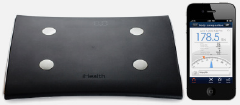
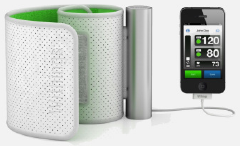
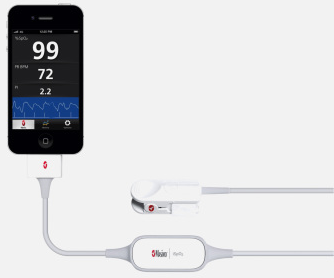
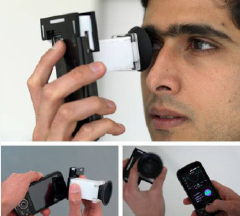
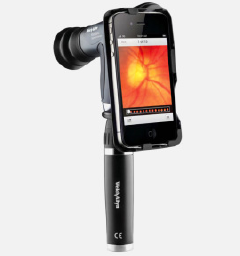
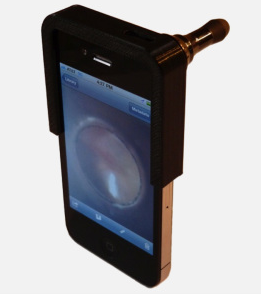
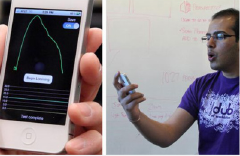 Lung function using a SpiroSmart Spirometer app to conduct a respirometer test
Lung function using a SpiroSmart Spirometer app to conduct a respirometer test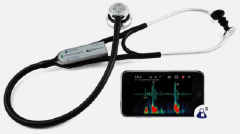

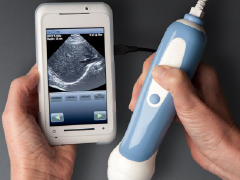
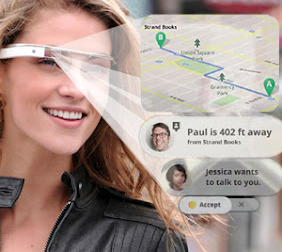
RELATED ARTICLES:
Amazon, Walmart and Best Buy quietly entered Healthcare market to disrupt an industry resisting change. The big winner? Consumers. (Inc. September 2019) I COMMENTED:
Smartphone Based Medical Imaging
Cardiologists say Apple is overselling its health rollout while FDA applauds — How about a Smart Phone physical? This article is about Apple Watch including the same EKG technology as AliveCor.
Best Buy Continues To Bet On Digital Health With New TytoHome Deal (Forbes, 4/17/2019) BestBuy signs exclusive deal to sell the $299.99 TytoHome telehealth devices kit.
Withings Body Cardio smart scale can now offer an advanced cardiovascular analysis
AliveCor Miniature six-lead ECG is more accurate than Apple Watch (5/29/2019)
Would You Trust An Automated Doctor? (Forbes, 6/19/2019) There’s an important point not covered in this article and the survey it’s based on. Think of tech innovation as an extra tool for you and your doc, not as a replacement of your annual physical with her. Beyond just real-time monitoring of a patient’s health is the ability to provide context and actionable insight that can influence behavior. Diabetics can learn what diet and exercise choices most affect glucose levels, with the objective of minimizing measurement swings. Athletes can tailor workouts for maximum benefit and minimum risk while tracking progress. And patients, family, and/or caregivers can be alerted if things seem dangerously out of sorts.
Apple Watch ECG vs. hospital EKG: Not the results I was expecting (CNET July 2019)
3 must-haves to hit telehealth’s tipping point (AMA December 2019)